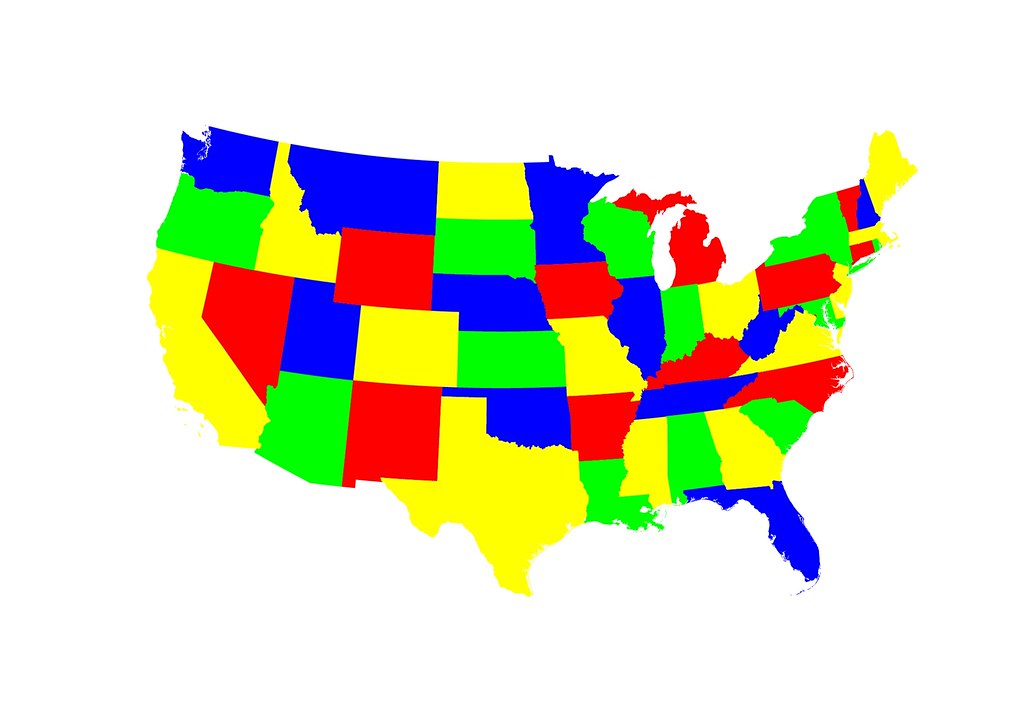Golf carts have become a popular mode of transportation, not just on golf courses, but also in many communities across the United States. However, the laws and regulations governing their use can vary significantly from state to state. As a golf cart owner or operator, it’s crucial to understand the specific laws and safety regulations in your state to ensure the safe and legal operation of your golf cart.
In this comprehensive guide, we will provide an in-depth overview of the golf cart driving laws in different states, including safety equipment requirements, age limits, speed limits, permitted locations, and recent updates to these laws. So, whether you’re a seasoned golf cart driver or a new owner, keep reading to learn everything you need to know about golf cart driving laws in the United States. let’s discuss Golf Cart Drive Laws in the United States Different States. if you belong to Alaska you should know the rules of driving a Golf Street Cart here.

Key Points
| Topic | Key Points |
|---|---|
| Safety Equipment | – Headlights, taillights, turn signals, mirrors, and seat belts are often required. – Some states may require windshields and windshield wipers. |
| Age Limits | – Minimum age for golf cart drivers is typically 16 years. – Some states may require a valid driver’s license. |
| Speed Limits | – Maximum speed limits for golf carts vary by state, ranging from 15 to 20 mph. |
| Permitted Locations | – Golf cart driving regulations vary; permitted locations may include private property, public roads, or designated paths. |
| Recent Changes/Updates | – Laws regarding golf cart driving can change over time; stay updated with the latest regulations in your state. |
| Registration | – Many states require golf carts to be registered and display license plates. |
| Insurance Requirements | – Some states may require insurance for golf carts. |
| Street-Legal vs. Off-Road | – Street-legal golf carts meet specific safety requirements and are authorized for use on public roads. – Off-road golf carts are only authorized for use on private property. |
| Resources | – State DMV websites, local government offices, and golf cart dealers can provide more information on local regulations. |
Golf Cart Driving Laws in Different States
Golf cart driving laws and regulations vary significantly from state to state. It is essential to familiarize yourself with these laws before operating a golf cart. Not only will you avoid fines and other penalties, but you will also ensure the safety of yourself and others.

Safety Equipment Requirements
Safety equipment requirements are a crucial aspect of golf cart driving laws. In many states, golf carts are required to have headlights, taillights, turn signals, mirrors, and seat belts. Some states also require a windshield and windshield wipers. Always check the specific laws in your state to ensure that your golf cart is properly equipped.
Age Limits
Age limits for golf cart drivers vary by state, but many states require drivers to be at least 16 years old. Some states also require a valid driver’s license to operate a golf cart. Always consult the laws in your state to know the age limit requirements for golf cart driving.

Speed Limits
Speed limits for golf carts also vary by state. In some states, the maximum speed limit for golf carts is 20 miles per hour, while in others it’s as low as 15 miles per hour. It’s important to know the speed limit in your state and to follow it to avoid fines and other penalties.
Permitted Locations
The locations where golf carts are permitted to be driven also vary by state. In some states, golf carts are only allowed on private property, while in others they can be driven on public roads. Some states also have designated golf cart paths. Always check the laws in your state to ensure that you’re driving your golf cart in a permitted location.
RELATED: How Many Dimples Are On A Golf Ball?
Recent Changes or Updates to These Laws
Golf cart driving laws can change over time, so it’s essential to stay up-to-date on the laws and regulations surrounding golf cart driving. Many states have recently updated their laws to allow for the use of street-legal golf carts on public roads. Always check the laws in your state to see if any recent changes have been made.
Comparison of Laws and Regulations in Different States
Comparing the laws and regulations in different states can be helpful to get a better understanding of how they differ. For example, California only allows golf carts to be driven on roads with a speed limit of 25 miles per hour or less, while Florida allows street-legal golf carts to be driven on roads with a speed limit of up to 35 miles per hour.
Insider Tips for Safe Golf Cart Driving
Follow these insider tips from experienced golf cart drivers to operate your golf cart safely and in compliance with the law:
- Always use your turn signals and obey traffic signals and signs, even if you’re driving on a golf cart path.
- Be aware of your surroundings and watch out for pedestrians, bicycles, and other vehicles.
- Avoid using your phone or other distractions while driving.
- Keep your golf cart properly maintained, including regularly checking the brakes, tires, and battery.
- Always wear your seatbelt, even if it’s not required by law in your state.
Benefits of Golf Carts
- Convenience: Golf carts provide a convenient mode of transportation, especially in golf courses, retirement communities, and other designated areas. They are compact and easy to maneuver, making it simple to navigate through narrow paths or crowded areas.
- Environmentally friendly: Most golf carts are electrically powered, which makes them eco-friendly. They produce zero emissions, reducing pollution and contributing to a cleaner environment.
- Cost-effective: Golf carts are generally cheaper to purchase and maintain compared to regular cars. They have fewer components and require less fuel, resulting in lower operating costs.
- Quieter operation: Electric golf carts operate quietly, reducing noise pollution. This feature is particularly beneficial in residential areas or places where noise restrictions are in place.
- Easy to operate: Golf carts are relatively simple to operate, even for those with minimal driving experience. They typically have basic controls, such as a steering wheel, accelerator, and brake pedals.
Legal Requirements for Golf Carts
To legally own and operate a golf cart, it is important to understand the legal requirements specific to your state. Compliance with these requirements ensures the safe and legal operation of your golf cart.
Registration and Licensing Requirements
In most states, golf carts require registration and a license plate, and some mandate special licenses or endorsements to operate a golf cart. It is essential to verify the state’s regulations to ensure that your golf cart is properly registered and licensed.
Insurance Requirements
While many states do not require golf cart insurance, others do. It is essential to verify your state’s insurance requirements and obtain insurance to protect yourself and others in case of an accident.
Differences Between Street-Legal and Off-Road Golf Carts
Street-legal and off-road golf carts are two distinct types of vehicles, each designed for a specific purpose. Street-legal golf carts are equipped with safety features that meet certain requirements and are authorized for use on public roads. Conversely, off-road golf carts are not intended for use on public roads and are only authorized on private property.
How to Find Local Golf Cart Laws and Regulations
If you are uncertain about the golf cart laws and regulations in your area, use the following resources to obtain more information:
- Check your state’s Department of Motor Vehicles (DMV) website for information on golf cart laws and regulations.
- Contact your local police department or government office for more information on local laws and regulations.
- Consult with a local golf cart dealer or repair shop for guidance on golf cart laws and regulations in your area.
RELATED: 5 Best Golf Drivers for Beginners 2023
Advantages and Disadvantages of Golf Cart Driving
Golf carts can be a convenient and enjoyable means of transportation, but there are certain advantages and disadvantages worth considering before purchasing or using one.
Advantages
- Low cost of ownership: Golf carts are relatively inexpensive to maintain, especially when compared to traditional vehicles like cars and trucks. They have fewer moving parts, require less gas, and require less maintenance overall, making them an affordable option for many people.
- Eco-friendly alternative: Golf carts are an environmentally friendly alternative to gas-powered vehicles. They emit less pollution and noise and are more energy-efficient than traditional vehicles.
- Easy to operate: Golf carts are straightforward to operate and require minimal training. They usually have a basic set of controls, such as a steering wheel, accelerator, and brake pedal, making them easy for anyone to use.
- Versatile use: Golf carts can be used on golf courses, residential areas, and some public roads, providing a convenient way to get around without having to use a car.
Disadvantages
- Limited speed and range: Golf carts are not designed for high-speed travel, and their range is limited, with most models having a maximum speed of around 25 to 30 mph and a limited range of 30 miles or less. This makes them unsuitable for long-distance travel.
- Limited space for passengers and cargo: Most golf carts can only accommodate two to four passengers and have limited space for cargo. This makes them less practical for large families or groups.
- Safety concerns: Golf carts can be dangerous if not operated correctly. They lack the safety features of traditional vehicles, like seat belts and airbags, and are more susceptible to tipping over, especially when driven on uneven terrain.
- Registration, licensing, and insurance requirements: Depending on the state and location, golf carts may require registration, licensing, and insurance, which can be a hassle and an added expense.
Golf Cart Safety Regulations
When it comes to golf cart driving, safety is of utmost importance. In addition to the laws and regulations surrounding golf cart driving, there are also safety regulations that must be followed to ensure safe operation of golf carts.
Importance of Following Safety Regulations
Following safety regulations is important to protect yourself and others while operating a golf cart. It’s essential to always wear a seatbelt, and to avoid driving your golf cart in hazardous conditions such as rain or snow, which can make the roads slippery and increase the risk of accidents.
Description of Safety Features and Equipment Required for Golf Carts
Many states require golf carts to have certain safety features and equipment such as headlights, taillights, and mirrors. It’s important to ensure that your golf cart is properly equipped with these features to ensure safe operation. Additionally, some states require golf carts to have turn signals, reflectors, and windshields.
Tips for Safe Operation of Golf Carts
There are several tips that can help ensure safe operation of golf carts, including:
- Always wear a seatbelt, even if your golf cart is not equipped with one.
- Avoid driving in hazardous conditions, including severe weather conditions such as thunderstorms or heavy snowfall.
- Observe speed limits and other driving laws, and never exceed the maximum speed limit specified by your state’s laws.
- Keep your golf cart properly maintained, including regularly checking the brakes, tires, and battery.
Prohibited Locations and Situations for Golf Carts
In some states, golf carts are prohibited from being driven on certain roads or in certain areas. These may include highways, busy streets, public sidewalks, and bike paths. It’s important to check the laws in your state to ensure that you’re not violating any restrictions.
Penalties for Violating Golf Cart Driving Laws
Violating golf cart driving laws can result in fines and other penalties, such as having your golf cart impounded. The penalties for violating laws vary depending on the state and the specific violation. It’s important to follow the laws in your state to avoid these penalties.
Enforcement of Golf Cart Driving Laws
Golf cart driving laws are enforced by local law enforcement agencies. It’s important to cooperate with law enforcement and to follow their instructions to avoid fines and other penalties. If you are stopped by law enforcement while driving your golf cart, be sure to have proper documentation, including registration, proof of insurance, and a valid driver’s license if required in your state.
Resources for Golf Cart Owners and Operators
Golf cart owners and operators can benefit from various resources that provide information on where golf carts are permitted to operate in different states, as well as on related topics such as maintenance, repair, and accessories. Here are some resources to consider:
- Golf Cart Laws by State: This website provides a comprehensive list of golf cart driving laws and regulations by state, including information on safety equipment requirements, age limits, speed limits, and permitted locations. The website also includes recent updates or changes to these laws and a comparison of laws and regulations in different states.
- Street Legal Golf Carts by State: This website offers a state-by-state guide to street-legal golf carts, including information on registration and licensing requirements, insurance requirements, and differences between street-legal and off-road golf carts.
- Golf Cart Safety Tips: This website provides valuable safety tips for golf cart operators, including information on safety features and equipment required for golf carts. The website also includes tips for safe operation of golf carts, such as avoiding sharp turns, maintaining a safe speed, and keeping both hands on the steering wheel.
- Golf Cart Accessories: This website offers a wide variety of golf cart accessories, such as covers, enclosures, dashboards, lights, mirrors, and more. The website also includes helpful guides and videos on how to install and use these accessories.
- Golf Cart Maintenance and Repair: This website provides information on how to maintain and repair golf carts, including tips on battery maintenance, tire care, and troubleshooting common issues. The website also offers a DIY section with guides and videos on how to perform basic repairs and maintenance tasks.
By utilizing these resources, golf cart owners and operators can stay informed about the latest laws and regulations, as well as enhance the safety, performance, and longevity of their golf carts.
Pros and Cons of a Golf Cart
| Pros | Cons |
|---|---|
| Convenience | Limited speed and range |
| Environmentally friendly | Weather limitations |
| Cost-effective | Safety concerns |
| Quieter operation | Limited carrying capacity |
| Easy to operate | Legal restrictions |
Conclusion- Golf Cart Drive Laws in United States Different States
Golf carts are not only a fun and convenient way to get around, but they also come with a set of laws and regulations that must be followed to ensure safe and legal operation. By reading this comprehensive guide, you now have a better understanding of the laws and regulations surrounding golf cart driving in your state. You know that it is crucial to familiarize yourself with the safety equipment requirements, age limits, speed limits, permitted locations, and legal requirements for owning and operating a golf cart.
Always remember to prioritize safety and follow the laws and regulations in your area to avoid fines and other penalties. Operating a golf cart that complies with local laws and regulations is not only the right thing to do, but it will also ensure a positive and enjoyable experience with your golf cart.
If you want to learn more about golf cart driving laws and regulations, be sure to check out the list of resources provided in this guide. With this knowledge, you can confidently and safely enjoy all the benefits of golf cart ownership.
FAQs
Q.Who can drive a golf cart on public roads in the United States?
A.Drivers who are at least 16 years old and have a valid driver’s license.
Q.What safety equipment is required for the golf cart driving in the United States?
A. Headlights, taillights, turn signals, mirrors, and seat belts are required in many states.
Q.How can I find out the golf cart driving laws in my state?
A.Check your state’s DMV website, contact local government offices, or consult with a golf cart dealer.
Q.Who enforces golf cart driving laws and regulations?
A.Local law enforcement agencies enforce golf cart driving laws and regulations.
Q. What are the penalties for violating golf cart driving laws?
A.Fines, impounding of the golf cart, or other penalties can vary depending on the state and violation.
Q.How can I make sure I’m driving my golf cart safely and legally?
A.Always wear a seatbelt, obey traffic signals, and follow the laws and regulations in your state.
Related Content
Want more content? Check out a couple more of our awesome golf posts below.

